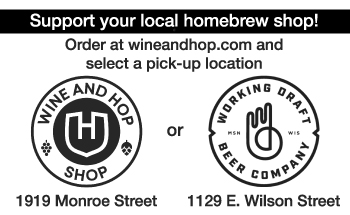by Andy Gricevich, Newsletter Writer
We think of it as “just dirt,” but there’s a world going on underground. Soil teems with life, changing constantly in cycles of mutual dependence as complex and fascinating as any found in our prairies and lawns, parks and parking lots, forests and fields. What happens in the soil determines the fate of everything living above the surface—and vice-versa. Ecological diversity, nutrition of food, purity of water, and the resilience of entire cultures depend on this largely invisible universe. Here’s a condensed version of the story of soil, from the geologic past to a possible future.
FROM ROCKS TO ROOTS, AND BEYOND
Above and below the Earth’s surface, billions of bacteria and fungi turn stone into the tiny particles of sand, silt and clay we call dirt. Into the dirt, over time, fall the remains of plants and animals, and other fungi and microbes move in to feed on minerals and organic matter. As they’re happily munching, they sense dessert nearby, and head for the sweets emerging from a nearby root.
Plants are solar panels, gathering the sun’s energy to convert carbon dioxide (CO2) and water (H20) into carbohydrates (sugars), which they use to build their bodies. Like us, though, a plant needs more than carbs. It needs macro- and micronutrients—like nitrogen and phosphorus, copper and zinc—which can only be found in the soil. The plant sends its roots down into the ground, looking for water and food, but most of the food it finds isn’t in a form it can absorb. Plants lack the digestive enzymes animals have to help make nutrients bioavailable. Fortunately, many species of soil bacteria can do the job; the waste they excrete after feeding on dirt and organic matter makes for perfect plant food.
In order to attract those bacteria, the plant produces sugar compounds called exudates. Depending on its nutritional needs, a plant can exude any of a hundred or so “recipes,” each of which will attract a particular kind of bacteria specializing in the nutrient the plant wants. These bacteria coat the root surface of the plant, exchanging their waste for high-energy treats. In the process, they crowd out harmful bacteria and alter the acidity of the soil, making it inhospitable to them. They also produce a kind of glue that keeps them from being washed away from the root surface, and that glue sticks tiny dirt particles together into larger pieces.
Fungi, too, feed on the carbon in the roots. While some fungi are pure parasites, a special class called mycorrhizae [my-ko-RISE-ay] bond with roots in mutual exchange. These fungi wrap their long threads (called hyphae) around, or grow into, the root, providing the plant with nutrients that bacteria can’t process. External hyphae form an armor against disease-causing fungi and root-feeding roundworms.
They also do something more astonishing: reaching out in vast webs through the soil, mycorrhizal fungi link the roots of many different plants, and extend to deep places the roots can’t go. The fungus can “sense” that a particular plant needs water during a drought, or is starving for a specific nutrient, and will pipe what’s needed to that plant. It can even draw from an excess of one nutrient in a single plant as much as a mile away, to meet the deficiency in another plant!
As they reach through the soil, fungal hyphae wind around the bits of dirt stuck together by bacterial glue, binding them into the larger bits we see when we look at a handful of good, crumbly soil. Space opens between soil particles, letting water and air penetrate the ground, making space for roots and for larger soil organisms. Fungi also alter soil pH in ways that favor the growth of their plant partners and impede that of many of the shallow-rooted, heavy-seeding plants we call weeds.
Most flowering plants can’t survive without these relationships, so it’s well worth expending up to seventy percent of their energy on root growth and exudates to maintain them. With fungi and microbes acting as external digestive and immune systems, plants have more energy for growth, and for keeping their own defenses strong. A well-nourished plant produces plenty of the phytochemicals that resist and repel predators and diseases aboveground—the same compounds that make a plant flavorful and medicinal for us.
The soil food web (a term used in place of “food chain” by scientists like Elaine Ingham, to do justice to the complexity of the system) works as a beautiful example of coevolution and self-regulation in undisturbed nature. Microbes and fungi become food for protozoa and worms, which excrete still more plant-available nutrients. Those creatures are eaten by larger worms and arthropods, keeping populations in check so that the smallest organisms aren’t wiped out. Birds and mammals eat worms and bugs, while other animals eat the plants. Perhaps the plants meet huge, densely packed herds of herbivores, grazing the freshest growth at the tips of grasses before moving on, out of the range of their predators. As they pass, their brief but heavy impact opens the ground, and they deposit huge amounts of manure to feed a variety of soil organisms. The quickly-grazed plants send energy back into their roots, deepening their reach, increasing access to water and interaction with their subterranean partners—and then back into the growth of new, lush leaves. Some of the grasses, trampled by the large ruminants, get absorbed into the soil, making room for lower herbaceous plants to flourish in the understory, adding an extra layer of greenery, pulling more CO2 from the atmosphere. Fungi convert organic matter to humic acid—a bank of fertility that can last for centuries. The opened soil lets more water filter down into aquifers, purified on its way by creatures that take up and bind toxins and heavy metals. Rich topsoil increases steadily. Everything stays in balance. The vast prairies and savannas that once covered large portions of the planet’s land come into being—the habitats for an astonishing diversity of plant and animal life—the places where human beings first take the stage.
BREAKING GROUND
Enter agriculture. In the Fertile Crescent, humans, having managed wild grasses to favor the growth of those with the most nourishing seeds, figure out how to plant the best varieties under more controlled conditions. To establish a blank slate for their wheat fields, humans begin to plow. As they break the ground, they cut up fungal networks that stabilize the soil. The newly-tilled ground looks fluffy at first, but a hard rain comes, scattering the soil particles, flattening them out, and the sun bakes it into a hard crust. The process gets repeated with each new crop, and the wheat, planted again and again in the same place, drains the soil of its particular set of nutrients. Bacteria evolved to pair with other plants diminish in population. The minerals they once made available remain locked up. As the soil loses structure and becomes more compacted, less oxygen gets into the ground, and harmful bacteria, adapted to anaerobic conditions, begin to take over. Roots have a harder time pushing into the soil. The plants’ natural immune systems weaken, and disease and weed problems increase in frequency, leading to crop failures. Without an extensive fungal network to provide emergency water, drought wipes out the remaining crops, and the exposed topsoil gets blown or washed away by windstorms and torrential rains. Populations grown dependent on wheat starve. The once-fertile land becomes desert, and sands cover the remnants of the world’s first great civilizations.
Fast-forward to the 1930s. In the U.S., the Dust Bowl repeats the ancient scenario. A couple of decades later, chemicals left over from the war get introduced to mechanized agriculture, promising to extend production indefinitely by providing fertility and suppressing weeds, harmful fungi, and insect pests. Most of the chemical fertilizer can’t be taken up by plants, and ends up in the ground, where it eliminates more microbes (while fungicide kills beneficial fungi along with damaging strains) and makes its way into rivers, lakes and oceans. Plants become weaker and less nutritious, and the soil more depleted, necessitating more and more inputs and more heavy tillage—short-term solutions that continue the degradation of the food web. Monocrops of corn and soy go largely to feed monocrops of herbivores, kept in confined areas where they erode and compact the soil. Cities imitate the countryside. Suburban humans spray and fertilize to establish monocrops of grass in their yards. Some conservation groups use Roundup to fight invasive plants in small patches of restored prairies. Chemical residues make their way, inevitably, to the water, polluting it for many years to come. Everywhere, it’s a system headed, often literally, downhill.
GROUNDWORK
By the 1960s, aware of the unsustainability of the system, the founders of organic agriculture put soil health at the top of their priorities (well before the advent of the big organic farms, with their dependence on heavy tillage and organically approved, yet still disruptive, inputs). Small, diverse farms make a comeback, practicing frequent crop rotations and replenishing soil life with compost. Biodynamic farming and permaculture affirm the complexities of whole systems, working with all possible natural dynamics, rather than against them, nudging conditions in desired directions through sustainability minded design, leaving space for wildness. By the ’80s and ’90s, holistically minded scientists design specifically targeted composting programs for vegetable farms, and work with grain growers to incorporate “no-till” planting, encourage fungal abundance in the soil, and introduce perennial plants under and between rows of annual crops to sustain the food web.
Land stewards and ecological thinkers imagine replacing staple crops with alternatives that require little or no soil disturbance. Wes Jackson’s Land Institute works to develop perennial varieties of wheat through old-fashioned selective breeding. Minnesota’s Badgersett Research Institute breeds disease-resistant, cold-hardy chestnut and hazelnut strains; these long-lived tree crops could, it’s hoped, replace the nutritionally comparable corn and soy that are among our most large-scale, ecologically destructive crops.
Contrary to the widespread assumption that livestock always destroy land and environment, practitioners of planned grazing show that well-managed herbivores can do an astonishing job at building rich, living soil. Restorative graziers mimic the patterns of the migratory herds that created the Earth’s prairies and savannas, using portable electric fence to move animals from one paddock to another at high frequencies, in rhythm with seasonal growth patterns. Such practices reverse erosion, build soil at rates previously thought impossible, and return devastated land around the world to thriving habitat for plants and animals, domesticated and wild.
Into the future: we in the cities and towns, ever more aware of the crucial role of food and ecology in our health and that of our communities, friends and families, learn more about the centrality of soil life to our closest concerns. Maybe we start eating more seasonally and locally, visiting co-ops or farmers’ markets for produce grown on diverse farms, tree-based and perennial nuts and berries, and meat and dairy from well-managed grazing operations. Perhaps we get over our addiction to lawns, give each other gently skeptical looks when we spray herbicides, make space for weeds, animals, kids at play in clean places. We might look at a dandelion, clover or nettle, and see a taproot that links together a vast, intricate web of underground life, or a collector of nitrogen that replenishes the soil. We might see those very plants as naturally-adapted food. If we have the resources and ambition, we might introduce perennial food plants to our yards, or establish chemical-free prairie plots throughout entire neighborhoods. We might ask our neighborhood associations and parks departments to do the same. Any of us can have a role in befriending the soil.
We’re at a unique point in history. We have the knowledge necessary to change the course of a civilization that, in treating soil like dirt, leads—sooner or later—to collapse. Here at the top of the food chain, we have the capacity, and maybe the unique responsibility, to see ourselves as just one special participant in the food web—one that can understand, and work with, the interdependence of the seen and the unseen, the small and the large, the world we make and the ground we stand on.
For more on the soil food web, see the work of Dr. Elaine Ingham (to whom I owe much of the knowledge in the first sections of this article), as well as Jeff Lowenfels and Wayne Lewis’ book Teaming With Microbes. Among many introductions to permaculture, Bill Mollison’s and David Holmgren’s works stand as the foundational classics. Find Ben Becker’s article on Biodynamic farming in the July 2017 issue of the Reader. The Savory Institute, Holistic Management International, and regrarians.org are great sources of information on regenerative grazing and restorative agriculture infused with a deep sense of history and ecology.

